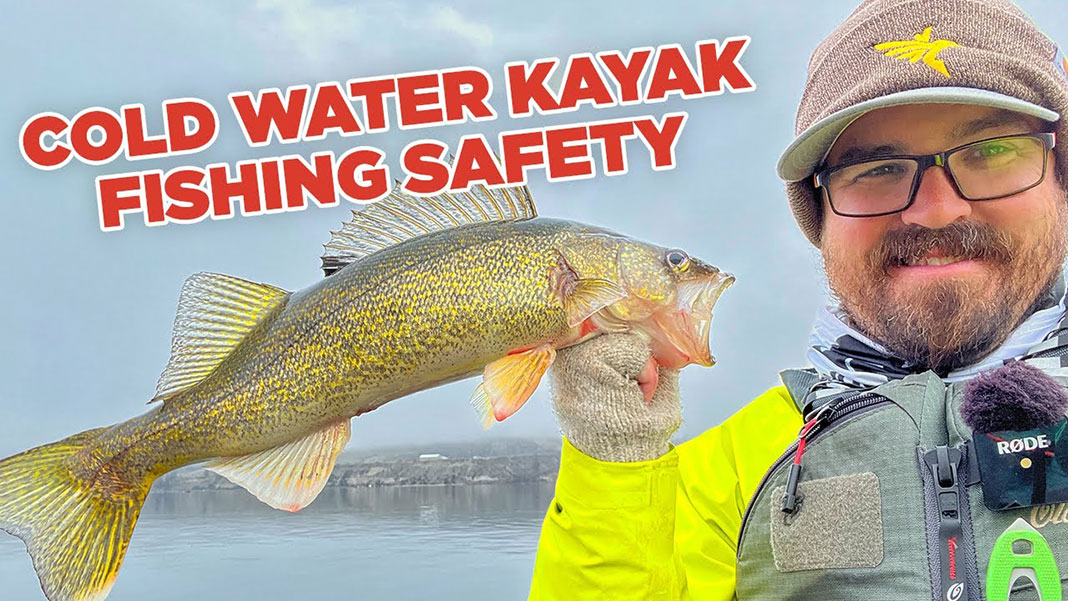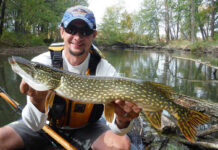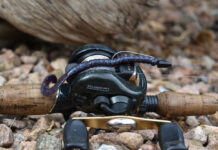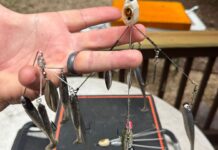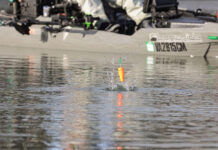Musky may be bigger and meaner, and bass may dominate south of the Mason-Dixon line, but both fish play second fiddle up north—where frying pan-friendly walleye are the most popular gamefish across much of the upper United States and Canada.
Walleye can be addictive puzzles to solve. They swim in a range of rivers, lakes, and reservoirs and can be caught with both live bait and artificial lures in deep water, shallow water, muddy water, and clear water. Many anglers default to live baits and finesse tactics for walleye, but they can be shockingly aggressive fish that unleash slobber-knocker hits on giant jerk-baits, stickbaits, spinners, and crankbaits. With so many variables in play, it can be a challenge to know when, where, and how to catch them.
That challenge has lured me for 40 years. Living most of my life in walleye country, I’ve jigged silty Iowa rivers and windy South Dakota reservoirs, cast pristine rivers in Wisconsin and Michigan, and trolled weedy Minnesota lakes and choppy Great Lakes. I’ve been skunked, skipped class to limit out, and caught thousands in my lifetime from shore, power boats, and kayaks. Based on decades of successes—and failures—this guide will help beginners and experienced anglers catch this legendary and tasty fish.
How to Catch Walleye—A Comprehensive Fishing Guide
Walleye Fishing Basics
Walleye are freshwater fish that favor cool- to cold-water lakes, reservoirs, and rivers. The largest member of the perch family gets its name from its opaque, glassy eyes—which reflect in the light. Usually gold to dark olive in color, these fish also can be recognized by their torpedo-shaped bodies, pointy-sharp teeth, and white-tipped tail fins.
Their natural range spans most of Canada, the upper Mississippi and Missouri River watersheds, and the Great Lakes. However, stocking has expanded their range to warmer regions where deep reservoirs and dam releases provide enough cool water for them to survive.

The Great Lakes are arguably the epicenter for these fish—with Lake Erie the unofficial “Walleye Capital of the World.” Other landmark lakes include Rainy Lake and Lake of the Woods on the Minnesota-Canada border, Lake Winnipeg (Saskatchewan), Devil’s Lake (North Dakota), Lake Oahe (South Dakota), Lake Mille Lacs and Leech Lake (Minnesota), Green Bay (Wisconsin), and Lac Seul (Ontario). Famous walleye rivers include the Detroit River (Michigan), Maumee River (Ohio), and the upper Mississippi River.
Walleye Behavior
Understanding the natural behaviors of these fish can help you catch more and bigger fish:
- They primarily feed on smaller fish, particularly minnows, shad, ciscoes, alewives, perch, and other gamefish.
- However, they’re also opportunistic feeders more than willing to munch on crustaceans, invertebrates, frogs, and underwater insects when they’re readily available.
- Walleye are skilled hunters—but rarely the apex predator—in the waters they swim. To compete with the pike, musky, and bass higher up the food chain, they turn to their superpower—their superior vision.
- You might think those eerie eyes are clouded by cataracts. However, they’re extremely sensitive to light, which helps these fish see well in low-light conditions. They work like night vision goggles when there’s dark sky or turbulent water, giving them an advantage over baitfish and predators alike. On the flip side, they generally shy away from sunlight, especially in clear water.
- This means walleye are most active at night and overcast days—an important consideration for knowing when and where to fish for them.
When to Fish for Walleye
The Night Bite
Since walleye are visual feeders with excellent night vision, the best time to target tends to be from dusk to dawn. The “night bite” is peak fishing time for aggressive and trophy-sized fish. On my walleye trips, we’ve typically fished before breakfast and after supper.
Daylight Opportunities
Walleye tend to be less aggressive during the day. However, they’re still catchable in daylight, especially in low light. Deeper water, stained water, and heavy cover provide these fish with sun protection. Rain or clouds will also typically trigger them to feed during the day. Even moderate winds create “walleye chop”—wave activity that limits light penetration and churns up sediment, spurring them to feed in murky water that they manage much better than other species.
These behaviors add up to a common daily pattern that anglers can exploit to catch increase their catch. They typically hunker down in deeper water during the day and then swim up to the shallows to feed aggressively in the dark. Consequently, many anglers rely upon finesse tactics in deeper water during the day and fish more aggressively at night in shallow-water hot spots.
Where to Fish for Walleye
This daily pattern also means that walleye often congregate where shallow water and deep water meet—the edges, drop-offs, and weedlines of lakes, reservoirs, and rivers.
In clearwater Northwoods lakes, for example, classic walleye water consists of a shallow flat bordered by a shallow weedline on one side and a deep drop-off on the other. Further south, my hometown honey hole was similar, but weedless—a shallow, wind-swept point on a muddy reservoir framed by shallow rip-rap shoreline on one side and a 35-foot drop off into a creek channel on the other. By day, they could be caught in the creek channel with live bait. By night, they would swim up to the shallow point to binge on baitfish that were disoriented by the dark sky and silty water—and shellack the swim baits and crank baits that I cast into knee-deep to chest-deep water.
In addition to these hot spots, anglers can pinpoint where to fish by focusing on structure, current, forage, and seasonal cycles.
Structure

In all types of water, walleye typically relate to structure, such as drop-offs, points, islands, underwater humps, channels, weed beds, and standing timber. They seem to prefer rocky structures in lakes and rivers while relating more to vegetation in shallow or clearwater lakes. As a rule of thumb, areas that transition from one bottom type to another often hold these fish. It’s rarely a bad idea to fish edges, weedlines, depth changes, and irregular bottom features.
Current
Both current and structure are important to consider when fishing a river for walleye. Jetties, wing dams, bridge pilings, and rip-rap hold walleye in rivers because those rock structures provide both current breaks and ambush points. When I’m fishing rivers, I usually concentrate on the current seams where faster and slower water meet. To waste less energy, they often hold in the current breaks where they can shoot into faster water to snag whatever food sources the current carries downstream. In some cases, aggressive fish will cycle in and out of strong current and turbulent tailwaters for short, frenetic feeding periods where they gorge on struggling baitfish and then fall back into slack water to digest their food and rest.
Follow the Forage
It’s also good practice to follow the forage. If perch or baitfish are concentrated in weed beds, you’ll probably find walleye swimming in the salad or patrolling the weedlines. When minnows seek refuge in current breaks on rivers, the predatory fish won’t be far away. Likewise, if shad and other baitfish school up in open water, walleye will often be suspended beneath them, waiting for an opportune ambush time. Seasonal frog migrations, insect hatches, and baitfish spawns can also lure them into short-term patterns of opportunistic feeding.
Seasonal Patterns to Target
Indeed, walleye move around during the year as changing temperatures, oxygen levels, available food, and biological processes prompt seasonal migrations and feeding patterns. They also break the rules a lot—however, anglers can anticipate broad seasonal patterns that influence where fish are more (and less) likely to be caught:
- Spring is when walleye migrate up tributaries and seek shallow water gravel beds to spawn. Many of the spring fish I’ve caught in the Wisconsin River, for example, probably swam up from the Mississippi River. Walleye feed voraciously during the pre-spawn, turn off during the spawn itself, and linger in water adjacent to their spawning grounds post-spawn until they recover and resume more regular feeding patterns. This is a key time of year to fish the shallows—where fish are easier to catch. Just keep in mind that many states and provinces prohibit spring walleye fishing to protect natural production and healthy fish populations.
- Summer is when walleye generally migrate downstream or swim out to deep-water structure in lakes and reservoirs. They may stack up around deep-water cover, stage around the lips of river holes and sub-channels, or suspend in open water to bully schools of baitfish. Others will use weed beds as umbrellas, burying themselves in the cabbage alongside munchable minnows, perch, and gamefish fry. At night, key in on shallow-water flats, points, and edges for aggressive feeding.
- Fall is trophy time. When many Midwesterners obsess over deer hunting, Big Ten football, or the start of hockey season, walleye will be staging in transition areas and prowling shallow water food sources to put on weight before winter temperatures crash their metabolisms.
- Winter is when these fish tend to hole up in deeper, slack water to conserve energy until the water warms up and their biological clocks start ticking again. This is prime ice fishing season, especially in hockey and curling country.

Walleye Fishing Techniques
The well-rounded walleye angler should be comfortable live-bait rigging, vertical jigging, casting, trolling, drifting, and ice fishing.
- Live-bait rigging is the most common walleye fishing technique. Use an assortment of sinker rigs, spinner rigs, and slip bobber rigs to dangle minnows, leeches, and nightcrawlers in front of feeding fish. Fishing with live bait rigs can catch neutral and negative fish that won’t touch artificial lures. For many, this is the only way to fish since live bait consistently produces good numbers and big fish.
- Vertical jigging is a staple walleye presentation for powerboat and kayak anglers who want to work the bottom. Keeping your line as vertical as possible, fish a weighted jig hook under your boat with a soft plastic twister tail or swim bait—preferably tipped with a minnow. The standard vertical jigging presentation is to bounce your jig along the bottom, occasionally lifting your rod tip or popping the jig up to trigger strikes. Vertical jigging is especially effective in rivers but also works in lakes with bottom structure.
- Casting jigs, crankbaits, and other lures can also catch walleye in fast and slow water. In rivers, I’ve caught plenty by casting around rip-rap, drop-offs, and current seams with simple twister tails and paddle-tail minnow plastics. Casting large stickbaits, jerkbaits, or floating minnow baits at night along shallow points, rocky flats, and weedlines can provoke more vicious strikes and much bigger fish than live bait anglers might imagine.
- Trolling is the best walleye fishing technique for covering a lot of water and locating fish on less familiar lakes, reservoirs, and large rivers. Cast out a live bait rig or crankbait, let out enough line for it to sink to your preferred depth, and pull it behind your kayak or aluminum boat as you trace edges, weedlines, and underwater humps or pass over suspended fish in open water. I’ve mostly trolled live bait with Lindy-style spinner rigs, but my best day was trolling Hot ‘N Tot crankbaits on Lake Erie. Among several simultaneous hookups, we once scrambled to figure out how to reel in six at once—with only four people in the boat.
- Drifting is similar to trolling, but you allow the current or wind—not your motor, paddle, or pedal drive—to propel your boat across the water. Moving with the wind, waves, or current presents live bait or lures at more natural speed than trolling, which can prompt more bites from wary fish. Depending on your speed, drifting can be an excellent platform for vertical jigging, bottom bouncing, or dragging live bait along the bottom. This is one mode of fishing where kayaks often outfish bigger boats.
- Ice fishing is a time-honored walleye technique up north where anglers can count on several months of safe ice. Hunkered down in a shanty or perched on a plastic bucket on top of a frozen lake, ice fishermen can pull fish up through holes in the ice with an assortment of small jigs and jigging spoons tipped with live bait. If you live where “shorts weather” starts when spring temperatures hit 40-50 degrees Fahrenheit, ice fishing will be one of the best walleye fishing techniques.
Mastering these staple presentations will help you catch fish year-round in a range of waters.
Walleye Baits & Rigs
The best baits for walleye are minnows, leeches, and nightcrawlers. Minnows are usually a walleye’s go-to food source, and leeches and crawlers have wiggly action that can tantalize the most finicky of those marble eyes.
Live bait can be fished near the bottom or suspended over off-shore structure. The best live bait rigs for walleye are slip-sinker rigs, spinner rigs, bottom bouncers, and slip bobbers.
- Slip-sinker rigs—such as the iconic Lindy Rig—consist of a walking sinker, swivel, 18- to 36-inch leader of monofilament line, and live bait hook for your leech, minnow, or crawler. I generally cast these out and let them sit in prime water, but I’ve occasionally crawled them across sandy flats—which worked wonders fishing some tailwaters of the Wisconsin River. When I’m fishing stained water, I usually opt for a fluorescent orange or chartreuse floating jig head to make my minnow more visible as it struggles a foot off the bottom.
- Spinner rigs are similar to slip-sinker rigs but add beads and a spinner above the bait hook to attract more fish to your worm, leech, or minnow. For years, my Dad and I have tied homemade Lindy Rigs, adding metallic and painted spinner blades to troll live bait along weedlines, mudlines, dam faces, and deepwater structure. It’s another live bait rig for locating and catching fish scattered over larger areas.
- Bottom bouncers are weighted live bait rigs for drifting or trolling a minnow, leech, or nightcrawler. Weighted wire rigs shaped like the number 7 snag up less than slip-sinker rigs and keep live bait just a little bit off the bottom in a walleye’s strike zone. As a rule of thumb, choose one ounce of weight for every ten feet of water depth (e.g. 2oz for 20ft water, 3oz for 30ft).
- Slip bobbers are another live bait rig that can coax walleye out of the weeds or dangle a hunk of meat in front of suspended fish in deeper water. I’ve used slip bobbers to lob my leech into the pockets of weed beds, suspend minnows over snaggy bottoms from my kayak, and drift minnows downstream through a feeding lane. Finesse fishing at its finest.

Walleye Lures
Walleye can also be caught with artificial lures—especially jigs, soft plastics, and crankbaits.
- Jigs. Weighted ball-head jigs can sink to the bottom, where walleye typically congregate in rivers, reservoirs, and lakes. Fished with a soft plastic—and ideally tipped with a minnow—jigs can catch big fish and big numbers of fish. Quarter-ounce jigs are my go-to, but I carry 1/8-ounce jig heads for shallow water and heavier jigs for vertical jigging bigger, faster rivers.
- Soft plastics can catch heaps of fish—and cost less, over time, than live bait. My walleye box contains 3-inch twister tails in several colors and 4-5-inch paddle-trail minnow baits. Soft plastics can be jigged or swum, making them an option for both slower and faster presentations. I tend to use soft plastics more in rivers than in lakes and reservoirs.
- Crankbaits can be cast or trolled. Casting stickbaits or jerk baits at night over flats and points can lead to savage strikes from patrolling walleye—Husky Jerks and Rattling Rogues are two of my standbys. I’ve also trolled floating Rapalas over shallow weeds at dusk and dawn, deep-diving Rapala shad raps and Wally Divers over deeper weed beds and drop-offs, and wiggly Hot ‘N Tots in open water to pick off suspended fish. They’re often money for me.

Choosing Colors to Fish for Walleye
There’s no consensus on the best colors for walleye lures and tackle. Traditionally, in clear water, anglers have fished white, natural minnow colors, and silver blades. In stained water anglers often choose gold blades and brighter colors such as chartreuse, orange, and hot pink. Those colors dominate the plastics, blades, and jig heads in my walleye arsenal.
Much like the “match the hatch” mantra of trout anglers, many walleye anglers choose colors that mimic the fish’s primary food sources—whites, silvers and chromes to imitate baitfish, greens and fire tiger patterns for perch, oranges and greens for crayfish.
Some scientific research suggests that walleye see oranges, reds, and greens better than other colors. However, a recent study from The Ohio State University concluded that these fish demonstrate no clear color preference in clear water, hit gold and yellow more in turbid water, and prefer black or purple hues in green, algae-tinged environments.
Sort through those contradictory color recommendations however you see fit.
Walleye Gear Essentials
Of course, it also takes rods, reels, line, and some tech toys to catch walleye.
Walleye Fishing Rods and Reels
Medium-weight spinning rods paired with a 2500- or 3000-size spinning reel work well for most walleye fishing presentations. The most versatile rod would be a 6’6” or 7’ medium spinning rod—a do-it-all size appropriate for most jigging, casting, trolling, and drifting presentations.
My walleye rods also include a medium-heavy spinning rod for trolling, vertical jigging heavier jig heads, and casting minnow-style crankbaits. If I’m finesse fishing with a slip bobber, I may downsize to a medium-light spinning rod to prevent a bigger fish from snapping the lighter line.
Bait casters also have a place in this fishing arsenal. I’ll use baitcasting combos to troll weighted spinner rigs and crankbaits. Baitcasting reels make it easier to release the spool to let out line behind the boat—and to feed a little line when they short strike the trails of my minnow, leech, or crawler. Plus, sturdier baitcasters have more power in the butt and faster tips—a feel I prefer when pulling some weight behind the boat. Baitcasting combos also work for casting heavier stickbaits and crankbaits.
Personally, I prefer to troll as little as possible. However, reels with built-in line counters can help dedicated trollers control the depth of their lures and baits behind the boat. You can literally dial in your line length to optimize your depth and the distance your rig trails behind the boat.

Best Fishing Line for Walleye
Walleye see better than most fish, so fishing for them often requires lighter lines, especially for more finesse presentations. 6-10-pound test lines cover most situations.
However, anglers should weigh the pros and cons of monofilament, fluorocarbon, and braided lines to dial in the best line setup for where they fish and how they fish.
- Monofilament is the traditional line for walleye fishing with its pros being its affordability, knot strength, and low visibility; however, mono is not as sensitive or as durable as more expensive types of fishing line. It also stretches more—which may be a good or bad thing, depending on your specific presentation.
- Fluorocarbon line is stronger, more abrasion-resistant, and even more low-vis than monofilament. However, it’s also more expensive and stiffer than mono, which compromises its castability. Many anglers balance the pros and cons of fluorocarbon lines by primarily using them as leaders that disappear in the water—a big plus, given the superior eyesight of walleye.
- Braided line is thinner than traditional fishing lines but also stronger and more sensitive. The downside is that it’s more visible than monofilament and fluorocarbon lines and more susceptible to abrasions in rocks. Anglers may pass on braid in clear or rocky waters. Or they can compensate for its limitations by fishing a monofilament or fluorocarbon leader below their braided line for better abrasion resistance and less visibility.
Electronics
With walleye relating so heavily to structure, electronics can be a crucial component if you’re sitting in a fishing kayak or deep-V aluminum boat. In particular, serious walleye anglers can benefit from depth finders, GPS technologies, and front-facing sonar units.
Depth finders pay big dividends since walleye relate heavily to changing bottom contours, depth changes, weedlines, edges, and clusters of underwater cover that depth finders chart out. Plus, they can help locate schools of baitfish and determine the depths of suspending fish. If you’re fishing open water from a big boat or fishing kayak, that’s crucial beta for locating and catching walleye, especially in big water.
Back in the day, the best way to mark walleye spots was to drop a plastic marker buoy, try to triangulate the spot against multiple shoreline features, and write down those notes in your fishing journal. Now, you just need to drop a pin, thanks to GPS devices that let us mark, search, and share honey holes and underwater structures. Some GPS units can also hold our boat positions on waypoints—a clear plus for many anglers.
Forward-facing sonar units have also made it easier to pin-point a fish’s locations and fine-tune your presentation. Steerable sonars mounted to a pivoting shaft or trolling motor shaft allow anglers to see fish away from the boat and observe on-screen how they move and react to different lures, colors, or presentations. Cheating? Maybe. But there’s no doubt that being able to see 100 feet out from your boat in multiple directions can help you identify, hook, and land more walleye.
These technologies open up new opportunities that eliminate much of the guesswork and trial-and-error of traditional walleye fishing. Then again, some of the biggest walleye I’ve ever seen were caught by old guys sitting on plastic buckets who simply sunk a hooked minnow behind a 10-cent lead sinker, stuck their rod in a holder, and waited for a fish to bite.
Feature photo: Eric Engbretson


